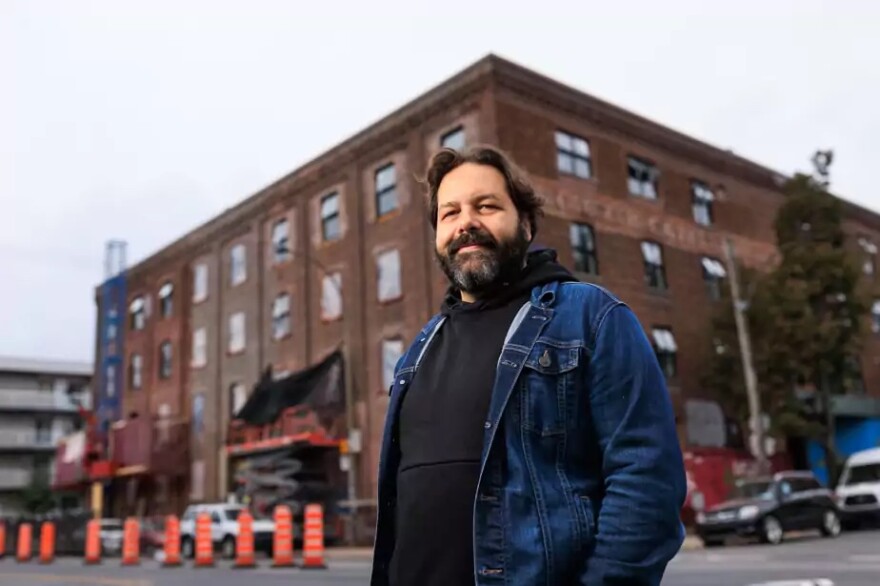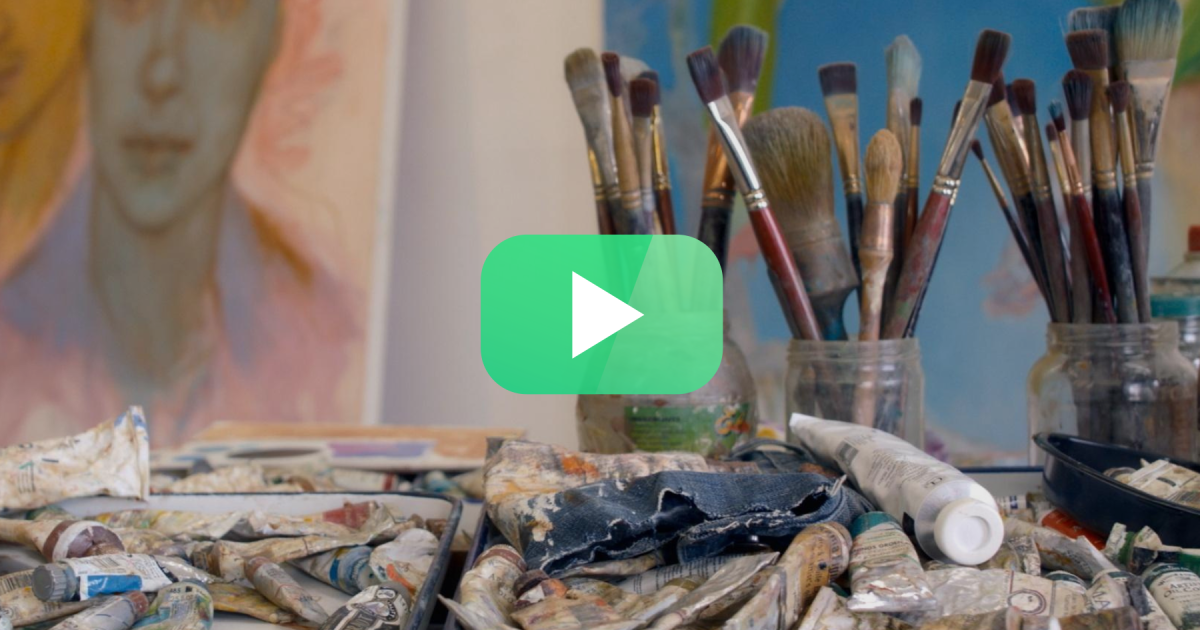There’s a four-story brick building in Montreal that has lived many lives. Beginning in the 1850s, it housed a Catelli pasta factory. After World War II, more than 400 workers made coats and other garments there. And for the last several decades, dozens of Montreal’s finest painters and artists made their studios in the space.
But just over a year ago, the family that owned the building for the last 70 years sold it. Now, there are new tenants, and the vibrant artist community is no more.
The film, “305 Bellechasse”, from filmmaker Maxime-Claude L’Écuyer, takes the viewer into several of the studios before that happened — with the voices of the artists serving as tour guides.
It’s part of Vermont Public’s Made Here film series, now in its ninth season.
Filmmaker Maxime-Claude L’Écuyer spoke with Vermont Public’s Mary Engisch about his film. This interview was produced for the ear. We highly recommend listening to the audio. We’ve also provided a transcript, which has been edited for length and clarity.
Mary Engisch: First, what is your connection to this building? How did you decide to make a film about it?
Maxime-Claude L’Écuyer: Yeah, it’s mostly with my friends, painters. So the first one that introduced me to the building was one of the characters. (He) was the first for me to enter the studio space in 305 Bellechasse and and I went from studio space to to studio space and discovered all this beautiful studios that — you know, we’re not really invited in some studio artists space. So that’s that’s, that’s wonderful to discover that those spaces were full of life, full of creation, full of, of art everywhere. So that’s that’s that’s mainly my first encounter with the 305 Bellechasse.
Mary Engisch: We get introduced to the main character of the film, which is the building — and they mentioned the wood floors and the high ceilings, and just that look of the space and how it’s really conducive to their work as artists. What made your filmmakers brain light up when you walked in to 305 Bellechasse?
Maxime-Claude L’Écuyer: As you mentioned, the 305 Bellechasse — the building itself is a character in itself in the movie. And we, what’s the, it’s all the feeling of this is the space, the memories, the ghost like of what has passed from all the years in the building, and the presence of the artists. All different, nine, nine different studio that I visit during the film and each of the studio as its own character as its own feel.
Yeah, for me it was it was to try to to tell the — how I feel about the studio and maintain that to the viewers. And I did also as you mentioned that I did only audio interviews with the artists, so we don’t see them. When I did the interviews, all the artists give them them the the interview with a lot of intimacy, a lot of — they spoke freely about their work, their how they approach work, how they see art, how the space interact with their with their work also, so was really like an encounter each of us, each of them gives me a really intimate approach to their creative process.
Mary Engisch: Yeah, you’re just mentioning it now and I’m only now realizing that we don’t ever see the artists
Maxime-Claude L’Écuyer: Yeah, and maybe that’s because we don’t see them, we allow ourselves to do to be more free, like the eyes more free, we can travel the space. And this is — also this really really editing a long and meditative kind of editing. So the viewer is more or less to have time to scrutinize the image and to scrutinize what he wants to see in the studio and add his own ideas of what, what the art and what the space is about.

Maxime-Claude L’Écuyer
/
Courtesy
Mary Engisch: Yeah, yeah I think that definitely comes through to like you said, like in the sound design and the certain shots that you’re, that you’re showing of each specific artists.
Maxime-Claude L’Écuyer: Well, each each studio I asked the artists to give me one day without anybody at the studio. And I tried, I tried to capture like, really wide wide shot to enter the space and go in deep and deep and deep in all details of every, every aspect of the painting of the main painting, and also there’s a lot of the sound design also, what they listen or not listening, what what is the feel of the, of every studio. And the challenge was was was always to, to find all the coherence between the artists, the art and the studio space. That’s the contrast between each and every studio that is, that makes the film exciting in a way.
Mary Engisch: That’s so intriguing. Can you sort of give us an update on the current status of that building? Did they leave voluntarily — were they evicted from that space?
Maxime-Claude L’Écuyer: Yeah, that’s a sad part of the story actually, the old get evicted from the space of the new owner did not want artists there anymore. And the, and everybody was spreading is spread around the central of Montreal, so they’re spreading east or north or — and it’s a film about memories but it’s sad in a way. But I was I was lucky to capture the memory of the building before everything has gone, so now they are all renovated and I think the building is for some some some some business office space and it’s half empty.
But this is something that that that is all big cities in the world are the same issues which is like, the center of the city — artists go to to different place, the the place become super interesting for investors and after a couple of years the artists cannot afford to stay, so they move away from under cool corner and doing, and go far away and do another cool cool cool neighborhood that they cannot afford in 10 years.
Have questions, comments or tips? Send us a message.

